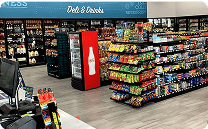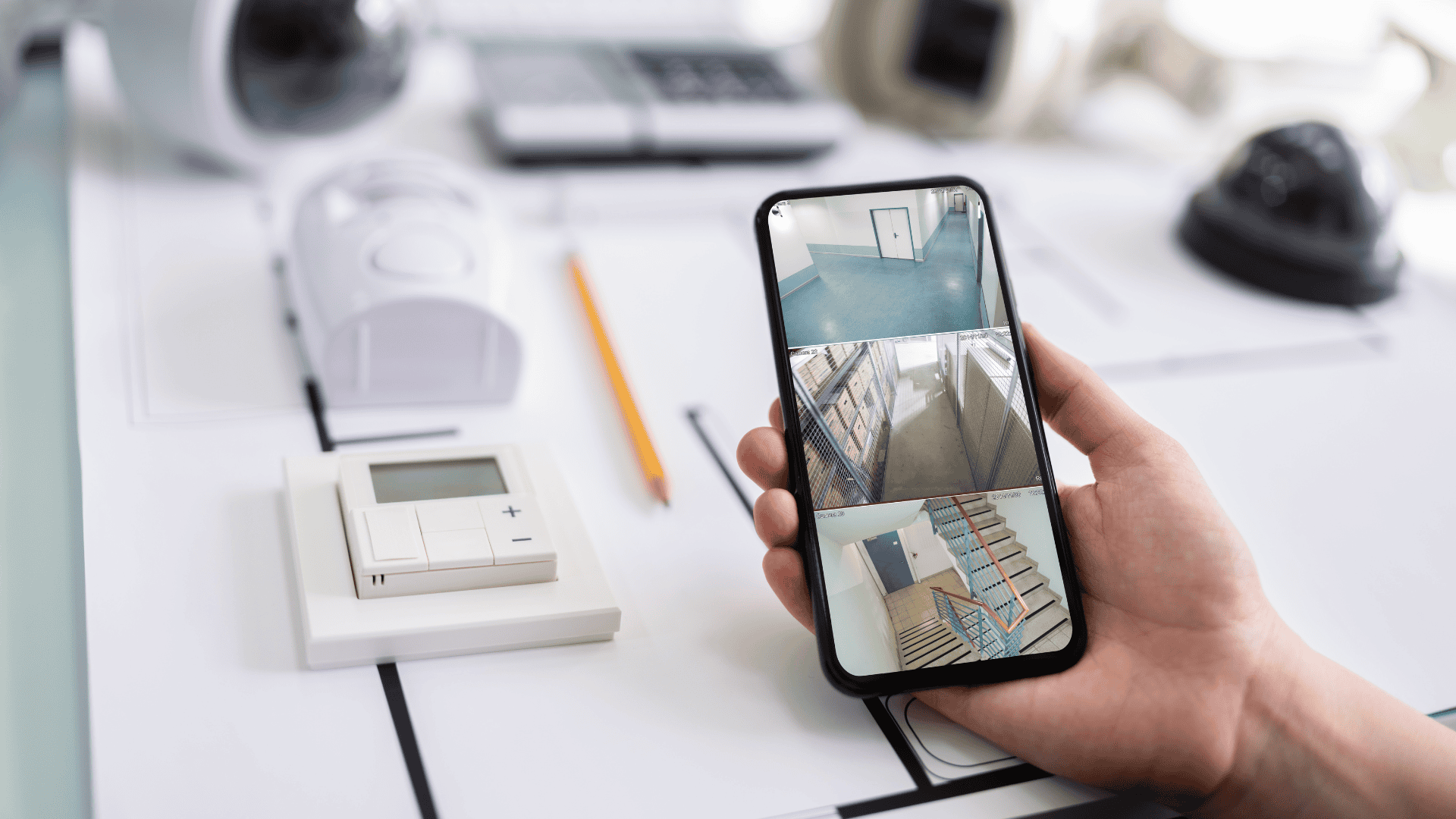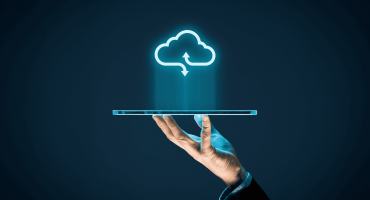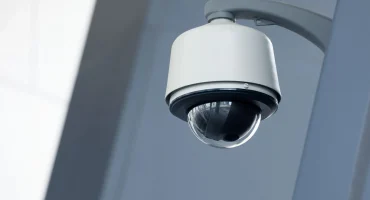In This article
Introduction
Remote video monitoring is a critical security strategy for every type of business, including corporate, retail, manufacturing, transportation, wholesale, services, and many others. As the name implies, the technology allows for property surveillance from a remote location. It was first introduced during World War II, but more recent developments, particularly the advent of IP cameras, have significantly increased its importance in security. Of even greater significance is the recent integration of Artificial Intelligence (AI) into advanced security cameras and systems. Automation technologies and Virtual and Augmented Reality (VR/AR) are adding even more capabilities to effective remote video monitoring.
What is Remote Video Monitoring?
Business owners want constant security on their premises, but they and any personnel can’t be at the place of business 24/7. Remote video monitoring is the solution. By installing the appropriate IP cameras and sensors, businesses route the video feed via a network to a central monitoring station. With real-time monitoring, trained staff view the video, analyze what they see, and respond to unauthorized activity or threats with immediate alerts. They address security incidents quickly and discreetly.
- Continuous monitoring – Security teams continuously monitor the video feed or follow designated time schedules.
- Scheduled monitoring – A schedule directs personnel to view specific camera feeds at set times, helping them track deliveries, staff arrivals, and other daily activities.
- Event-driven monitoring – When the system triggers an alert or alarm, personnel immediately check the video feed from cameras with a clear view of the activity.
- Event-based monitoring – Security teams monitor specific camera feeds that focus on high-risk activities or events that may cause security incidents.
- AI-powered monitoring – AI analyzes video footage, detects unusual patterns or human behavior, enhances image quality, and automatically alerts security personnel.
Key Benefits of Remote Video Monitoring in 2025
Remote video monitoring has become a necessity for a business’s security strategy and system to be effective, given the billions of dollars in losses every year due to theft, fraud, and burglary. An investment in technology is sure to be of great value and deliver multiple benefits to any business owner.
- Cost and operational efficiencies – Labor is one of the most significant expenses for any business. Remote video monitoring requires fewer security personnel on-site, reducing labor and associated costs.
- Scalability – As a business’s security needs evolve, remote monitoring technology can easily and affordably scale to support a business’s enhanced security strategy.
- More effective security – Real-time monitoring allows security personnel to protect a business’s premises remotely 24/7, quickly identify threats and suspicious activities, respond faster, and maintain a much safer business environment.
- Video alarm monitoring – An alarm triggers compatible security cameras to send live video to a remote monitoring station. Security personnel can quickly assess any incident and respond according to established security procedures. Analysis of the video data reveals insights that can lead to improvements in security and overall business operations.
Technologies Powering Remote Video Monitoring
Advanced technologies are crucial to enhancing security at all businesses, and remote video monitoring technologies have become increasingly innovative, helping businesses address their security gaps.
- AI and machine learning – AI algorithms can recognize objects and faces and detect suspicious activities in real time. Actual threats are accurately identified versus authorized activities, reducing false alarms. Machine learning observes and “learns” patterns or behaviors from video analysis to improve future monitoring and intelligent threat detection.
- Cloud video surveillance – Modern security systems generate large amounts of video data. Cloud storage secures the data, and additional storage capacity is available at a nominal cost. The video data is accessible via remote video monitoring, allowing personnel to review and analyze it at any time from anywhere.
- Internet of Things (IoT) and 5G connectivity – These technologies provide an advanced level of connectivity. IoT manages smart alerts and automated responses for video alarm monitoring. 5G transmits data faster, creates smooth video streaming, and operates accurately in areas with high use rates.
Best Practices for Effective Removal Video Monitoring
As much as technology powers remote video monitoring, it delivers the most value when a set of best practices complements it. Any business’s security strategy is optimized when it consists of various fully integrated parts: technology, training, and best practices.
- Defining objectives – The first step is to determine the objectives of remote video monitoring. These may include security, efficiency, compliance, or staff management.
- Remote video security camera system – Investing in a high-quality security camera system is a crucial step in maximizing the effectiveness of video monitoring. Fixed or PTZ cameras are recommended, and microphones and recording equipment of the same quality.
- Regular maintenance – For high-quality cameras and other equipment to deliver high performance, they require regularly scheduled maintenance and testing. To ensure cybersecurity, a business’s security best practices should include multi-factor authentication, encryption, and similar protection.
- Monitoring and response protocols – As part of remote video monitoring training, personnel should learn and even role-play a set of protocols for monitoring tasks and responding to suspicious activities or security incidents.
Common Challenges and How to Overcome Them
Businesses can achieve effective remote video security monitoring because it’s part of an integrated security strategy, but implementing that strategy presents several common challenges.
- Connectivity issues – The limited bandwidth of older connectivity technology is inadequate for the many advanced features of a remote video security camera. Upgrading to 5G connectivity will optimize the value of the latest security technology.
- Cloud reliability – An unreliable Internet connection can make it challenging to access cloud-stored data. Maintaining a robust connection and having multiple data backups are essential practices in the event of outages and emergencies.
- Privacy issues – Effective remote video security monitoring must be balanced against the privacy rights of employees and all others recorded via the system. A tight set of protocols, regular evaluations, and including employees in privacy discussions will help to achieve that balance.
- False alarms – An older remote video security camera can’t adequately identify some objects and movements, causing false alarms. AI-powered cameras and monitoring stations utilize advanced technology to analyze video footage for precise identification and recognition. Motion detection sensitivity can be adjusted to a lower daytime setting and a higher nighttime setting.
- Managing system complexity – video monitoring and other equipment in an overall security system pose a management challenge. Systems with easy-to-use apps and scalable systems will ease the management burden. Security services companies can provide support and training to streamline management.
Industry Applications of Remote Video Monitoring
One of the most significant benefits of remote video monitoring technologies is their broad applicability across various industries.
- Retail – Retailers can operate more securely, minimizing shrinkage due to shoplifting and theft, and presenting customers with a safer shopping environment.
- Hospitality – Hotels operate 24/7 and require thorough coverage of entrances, exits, all hallways, backrooms, and other common areas, as well as monitoring the movements and activities of guests and staff.
- Healthcare – Patient care and efficient staff operations are enhanced. Patients can be monitored remotely, allowing one nurse to check multiple patients, and facilities are more secure.
- Manufacturing –Remote video monitoring is crucial for safeguarding the valuable equipment and other assets of a manufacturing facility, as well as for monitoring the production process and ensuring the safety and well-being of employees.
Case Study: Successful Implementation of Remote Video Monitoring
Effective video monitoring is more than a security concept; it has proven itself in many real-world situations, at Krispy Kreme Doughnuts®, for example.
- Outdated, limited technology – Management and personnel could only view video footage or data archives while at the store, and they often didn’t notice when VCR tapes reached the end. The store upgraded to the DTiQ 360iQ platform, which enhanced customer service and reduced employee theft.
- Employee behavior – It was difficult to monitor employee behavior and determine their work commitment. DTiQ VIDEOiQ helps motivate employees to improve their behavior.
- Slip-and-fall complaints – Management questioned the validity of employees’ and customers’ claims of slips and falls. The DTiQ system features high-quality security cameras and remote video monitoring equipment to record evidence that refutes those claims.
- Felonies – Krispy Kreme had difficulties presenting sufficient evidence for possible felonies committed on-site. DTiQ provided a remote video security monitoring system to gather unambiguous video footage, thereby increasing the number of felony prosecutions.
Trends in Remote Video Monitoring for 2025 and Beyond
Just as innovative technologies are improving operations and driving revenue in many industries and companies, these overall trends are also enhancing the capabilities of remote video monitoring and its numerous benefits for businesses.
- Artificial Intelligence (AI) – AI is a major trend that automates many security tasks and procedures, such as enhancing the identification of activities to reduce false alarms and analyzing video data to recognize potential security breaches and trigger immediate responses.
- Video alarm monitoring integration – More remote video security camera systems include AI algorithms for highly accurate object and facial recognition, analysis of customer and employee behavior, and other detection capabilities.
- Hybrid cloud storage – Businesses conduct cloud video surveillance more securely by storing current and archived footage both on-premises and in the cloud. This combination makes scalability easier and keeps sensitive data more secure on-site.
- Smart devices – As more businesses adopt smart-device technologies, they can use voice assistants like Alexa for voice commands of remote video security cameras and remote video monitoring
- Advanced trends – Cybersecurity technologies are quickly evolving to stop unauthorized access to sensitive data. Drones and robots will become increasingly prevalent technologies for autonomous surveillance and to secure business perimeters.
Conclusion
A business’s security system consists of many critical components, but remote video monitoring is often the hub of the entire system. It provides real-time monitoring of all areas of a business, exterior and interior. Advanced technologies in security cameras enable real-time monitoring, allowing staff to analyze video, assess any situation, and respond quickly in accordance with established security protocols. Fewer personnel are needed, remote video monitoring is easily scalable, premises are monitored 24/7, and video alarm monitoring all add value to the entire security process.
Advanced technologies, such as AI, cloud-based video surveillance, and 5G connectivity, when paired with best practices like regular maintenance, maximize the effectiveness of remote video monitoring. It can also present businesses with various challenges, such as false alarms and privacy concerns; however, selecting the right technologies and consistently adhering to best practices will help overcome these challenges.
The future is bright, as more innovative technologies are emerging on the market, including AI, video alarm monitoring integration, hybrid cloud storage, and smart devices. Contact us to speak with an expert.



























